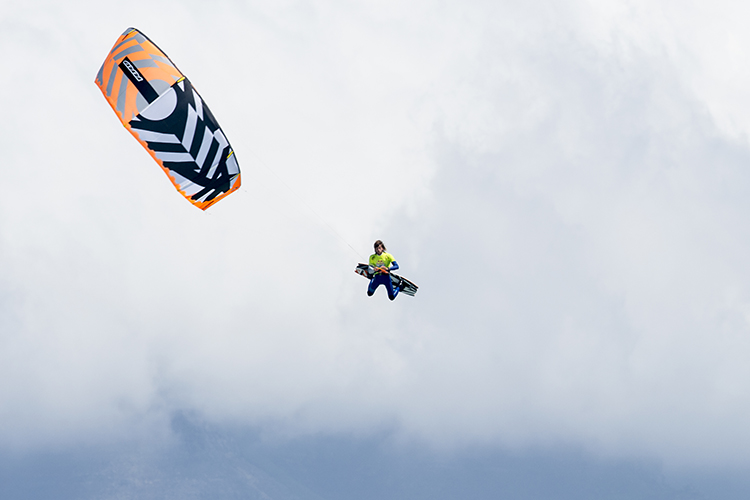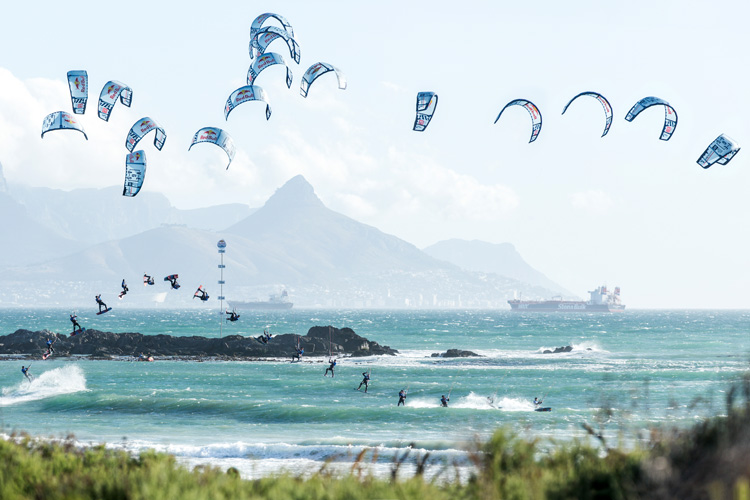The kite loop can be dangerous if you don't exactly know what you're doing. It is all about technique and commitment - the kite loop has nothing to do with courage or bravado.
So, take your time, book a kite instructor, or call someone with more experience in kiteboarding, and find a large riding playground without obstacles.
Injuries should not be part of the equation.
The ideal conditions for the first basic kite loops are flat waters and winds in the 8-12-knot range.
Get a medium-sized kite that turns fast.
With time and practice, you will feel more comfortable and move on from tight to big and mega kite loops.
Start performing tight kite loops between 12 and 1 o'clock while body dragging so that you become acquainted with the kite's behavior.
Always wear an impact vest when training or performing kite loops.
There are two things that you must avoid even in light wind conditions - an uncontrolled powered kite and an uncontrolled kite loop.
Kite Loop 101
Let's perform our first kite loop with a water start.
- Find some space and cruise upwind;
- Sit in the water with your kite at 12 o'clock;
- Pull hard with your back hand;
- The kite will loop under itself, generating power and allowing you to water start;

Practice your kite loop water start a few times before moving through to level two.
When you feel you've mastered the skill, go for the kite jump.
It is paramount that you're able to do a kite jump with your chest pointing downwind toward the landing.
Make sure you're stable while in the air and wait until you're coming down before initiating the loop.
- Find plenty of space downwind;
- Ride along and find a steady, medium speed;
- Keep the kite bar in the standard position;
- Slowly bring the kite high;
- Initiate a standard jump and make sure you're not rotating either way;
- As you're coming down, pull the kite bar with your back hand;
- Keep pulling, looping the kite under, and pointing your board downwind;
- Let the kite complete the loop and land the board;
If you feel you're going to wipe out, try to finish the loop and crash with your board feet first.
Never stop steering your kite while performing a loop.
Mega Loop 101
Now that you've learned the basics of kite looping, you can advance through to mega kite loops in between 25 and 45 knots of wind.
The only difference between a standard kite loop and a mega loop is in timing.
- Start riding at a consistent speed;
- Edge upwind and eye a chop;
- Tense your stomach muscles and boost a big jump;
- When you reach the peak of the jump, pull the kite bar with your back hand;
- Don't stop pulling the back hand, and keep the lines tensioned;
- Rapidly move the kite in front of you;
- Spot the landing, come downwind, and touch down;
If you're still in the early stages of learning how to execute a mega kite loop, remember that unhooking at 50 feet is not a wise thing to do and will put your life in danger.
